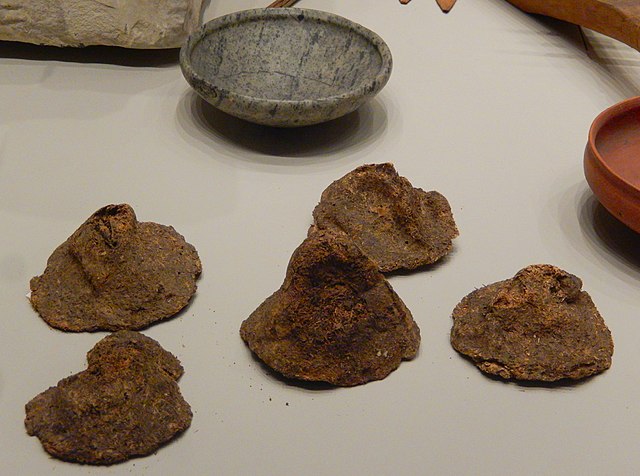Garum is a fermented fish sauce that was used as a condiment in the cuisines of Phoenicia, ancient Greece, Rome, Carthage and later Byzantium. Liquamen is a similar preparation, and at times they were synonymous. Although garum enjoyed its greatest popularity in the Western Mediterranean and the Roman world, it was earlier used by the Greeks.
Garum amphorae from Pompeii
Ruins of a garum factory in Baelo Claudia in Spain
Ancient Roman garum factory in Portugal
Mosaic depicting a "Flower of Garum" jug with a titulus reading "from the workshop of the garum importer Aulus Umbricius Scaurus"
Fermentation in food processing
In food processing, fermentation is the conversion of carbohydrates to alcohol or organic acids using microorganisms—yeasts or bacteria—under anaerobic (oxygen-free) conditions. Fermentation usually implies that the action of microorganisms is desired. The science of fermentation is known as zymology or zymurgy.
Grapes being trodden to extract the juice and made into wine in storage jars. Tomb of Nakht, 18th dynasty, Thebes, Ancient Egypt.
Sourdough starter.
Conical loaves of bread left as grave goods, exactly as laid out in the Great Tomb at Gebelein, Egypt, 2435-2305 BC
Beer and bread, two major uses of fermentation in food








